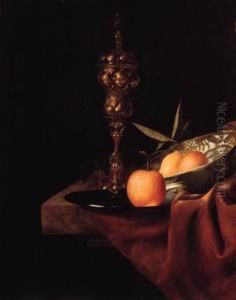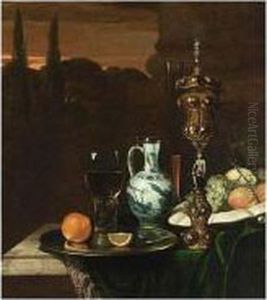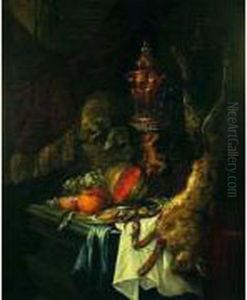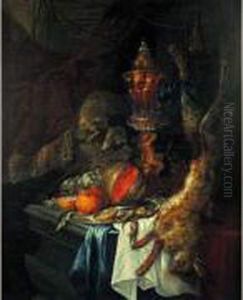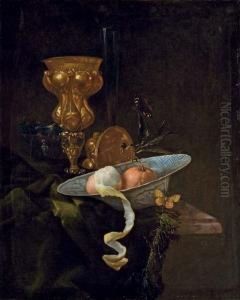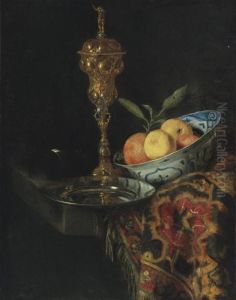Christiaan Jansz. Striep Paintings
Christiaan Jansz. Striep, born in 1626 and died in 1682, was an artist whose contributions to the world of art, though not widely recognized in the mainstream art historical narrative, offer a glimpse into the Dutch Golden Age's less celebrated corners. Operating in a period characterized by a flourishing of the arts in the Netherlands, Striep's work is indicative of the era's broader cultural movements, yet it carries a distinct signature that sets it apart from his contemporaries.
Striep's life and career were deeply intertwined with the city of Amsterdam, a bustling hub for commerce, art, and intellectual exchange during the 17th century. This environment provided a fertile ground for his artistic development. Unlike the more famous figures of his time, such as Rembrandt or Vermeer, Striep's body of work primarily focused on less grandiose subjects, reflecting the daily life and landscapes of the Dutch Republic. His approach to art was meticulous and detail-oriented, often capturing the subtle interplays of light and shadow that would define the Dutch realistic style.
Despite his evident skills and contributions, Striep's name has not endured in the annals of art history as prominently as some of his peers. This obscurity may be attributed to several factors, including the possible scarcity of surviving works and the overshadowing presence of more prolific artists of his time. Furthermore, historical records on Striep's life and works are sparse, leaving much of his biography to be pieced together from the margins of documented history.
What remains of Striep's legacy is a testament to the diverse and rich tapestry of Dutch art during its Golden Age. His works, where they can be found, are cherished for their insight into the period's aesthetic values and for their representation of everyday beauty. Art historians and enthusiasts continue to study Striep's contributions, hoping to shed more light on the life and art of this enigmatic figure. Through this ongoing research, Christiaan Jansz. Striep's place in the history of Dutch art, though niche, is increasingly appreciated for its unique perspective on the 17th-century Dutch society and its artistic achievements.
